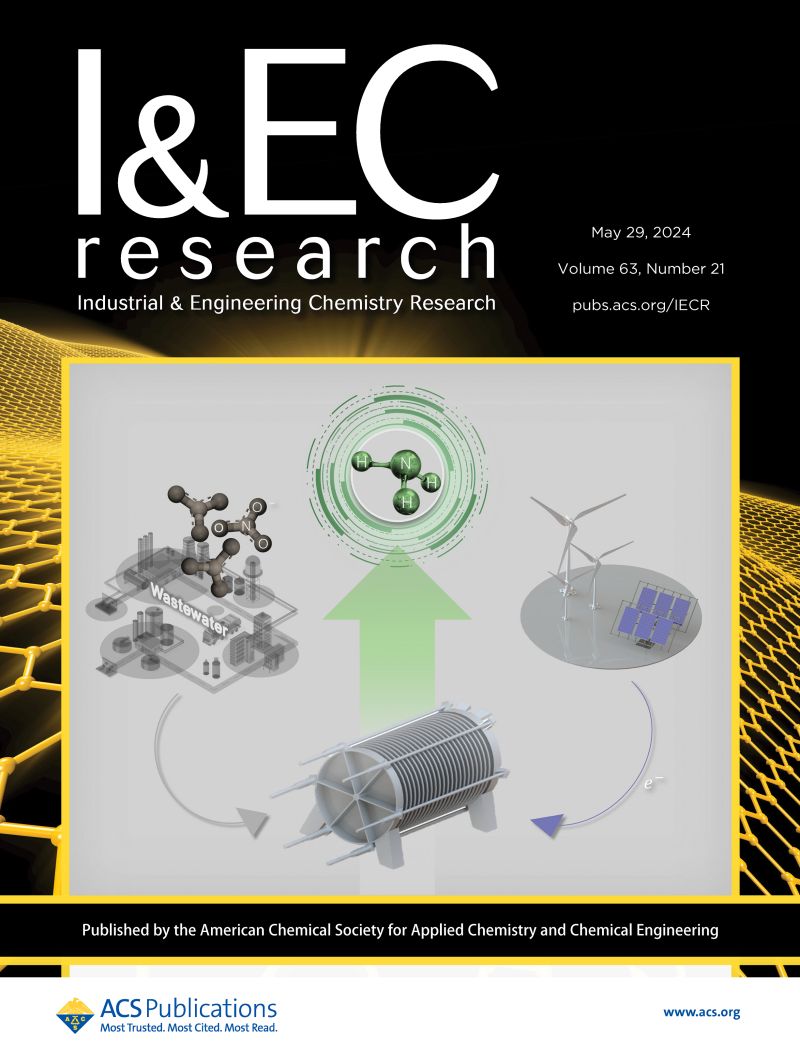锂离子电池的多电化学界面:流体密度泛函理论研究
IF 3.8
3区 工程技术
Q2 ENGINEERING, CHEMICAL
引用次数: 0
摘要
锂离子电池包含多个电化学界面。在电极-电解质界面上,电双层(EDL)的结构,尤其是离子分布,直接影响着电化学过程的特性和效率。快速准确地描述离子分布对于推进电双层研究和提高准固态聚合物电解质(QPE)的性能至关重要。然而,目前的实验方法难以直接测量 EDL 的密度分布,而传统的分子模拟又以计算时间长而著称。在本文中,我们专门针对 QPE 系统开发了流体密度泛函理论 (FDFT)。由于占据效应,聚合物的使用增加了界面处的离子密度。EDL 的厚度受不同聚合物聚合度的影响。此外,添加剂会增加锂金属阳极表面的 Li+ 浓度。结合 FDFT 的应用和 QPE 设计的理论方向,本文进一步发展了设计方法并提出了一些理论建议。本文章由计算机程序翻译,如有差异,请以英文原文为准。

Multiple Electrochemical Interfaces in Lithium-Ion Batteries: A Fluid Density Functional Theory Study
Lithium-ion batteries encompass multiple electrochemical interfaces. At the electrode–electrolyte interface, the structure of the electric double layer (EDL), especially the ion distribution, directly influences the characteristics and efficiency of the electrochemical process. A fast and accurate description of ion distribution is essential for advancing EDL research and improving the performance of quasi-solid-state polymer electrolytes (QPEs). However, experimental methods currently struggle to directly measure the density distribution of the EDL, and traditional molecular simulations are known for their long computational times. In this article, we have developed fluid density functional theory (FDFT), tailored specifically for the QPE system. The use of polymers increases the ionic density at the interface due to the occupying effect. The thickness of EDL is affected by different polymers’ polymerization degrees. Furthermore, the addition of additives increases the concentration of Li+ on the surface of the lithium metal anode. With the application of FDFT and the theoretical direction of the design of QPEs, this paper further develops the design method and puts forward some theoretical suggestions.
求助全文
通过发布文献求助,成功后即可免费获取论文全文。
去求助
来源期刊

Industrial & Engineering Chemistry Research
工程技术-工程:化工
CiteScore
7.40
自引率
7.10%
发文量
1467
审稿时长
2.8 months
期刊介绍:
ndustrial & Engineering Chemistry, with variations in title and format, has been published since 1909 by the American Chemical Society. Industrial & Engineering Chemistry Research is a weekly publication that reports industrial and academic research in the broad fields of applied chemistry and chemical engineering with special focus on fundamentals, processes, and products.
 求助内容:
求助内容: 应助结果提醒方式:
应助结果提醒方式:


